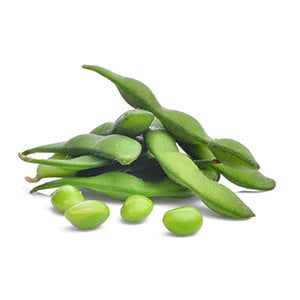Soybean

Soybean
Glycine max
Plant family
Legumes (Fabaceae)
Season Overview
Sowing
Harvest
J
F
M
A
M
J
J
A
S
O
N
D
Details
Light requirement
Sunny
Water requirement
Moist
Soil
Light (sandy)
Nutrient requirement
Low
Plant distance
8 cm
Row spacing
35 cm
Seeding depth
2 cm
Instructions
The season for this plant is over. The following instructions are for the next season.
End of May
Sowing
Mid of June
Hoeing
Every two Weeks
Mid of October
Picking
Every week
Description
The soybean (Glycine max), often referred to simply as soy, is a species of plant in the legume family (Fabaceae).
Origin:
North China, Japan
Growing tips
As an extremely heat-loving specimen among the legumes, soybeans attach importance to a location in warm locations. It does not cope well with harsh sites and late frosts. It quickly suffers frost damage if sown there too early. Locations in a sunny to semi-shady position are well suited. The soybean needs a slightly warm subsoil to thrive. It should be moderately heavy and its structure should prevent waterlogging. Furthermore, a slightly acidic to neutral, calcareous soil is recommended.
Companion Plants
Beetroot
Broccoli
Brussels sprouts
Cabbage (Cabbage)
Cabbage (Savoy cabbage)
Cauliflower
Celery (Celeriac / Celery root)
Celery (Celery)
Collard greens (Kale)
Collard greens (Tuscan kale / Dinosaur kale / Palm tree kale)
Common marigold
Corn / Maize
Cucumber / Gherkin
Kohlrabi / German turnip / Turnip cabbage
Lettuce (Lettuce)
Lettuce (Radicchio / Italian chicory)
Napa cabbage / Chinese cabbage
Oregano
Pak Choi
Potato
Radish
Radishes
Rutabaga / Swedish turnip
Spinach (Summer)
Turnip
Antagonistic Plants
Diseases
No diseases
Pests
Nematodes